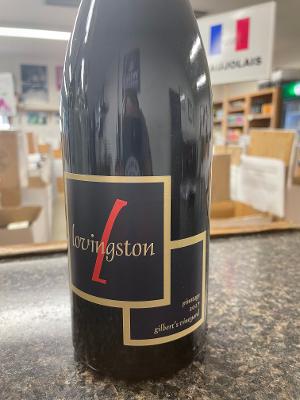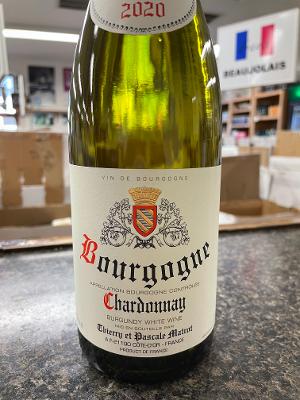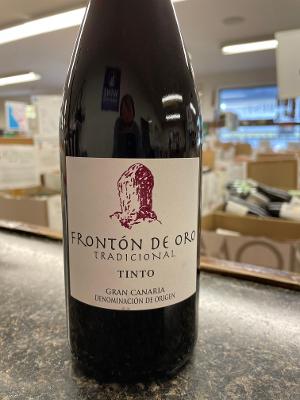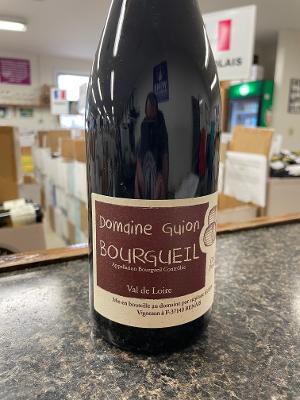 A check-in on one of our personal favorites in Virginia winemaking. The Puckett family founded the winery in 2003, and for nearly 20 years the partnership between them and one of Virginia's most talented winemakers produced some of the most elegant and thoughtful wines in the state. One of their most unique wines has been their work with Pinotage, a grape originating in South Africa as a hybrid of Pinot Noir an Cinsault, and a favorite of their South African-born winemaker. In it's home, Pinotage takes on more of the Cinsault character, with a rugged Rhone-like heartiness and and a dark savoriness that can sometimes move into the funky/paint fumes/rubbery world. In Virginia, it takes on more of the Pinot Noir personality, with a silky texture and very fine tannins, yet does not have as much of the fragility issues Pinot has in our hot and humid climate. It also proved to be exceptionally age-worthy as proven in many vertical tastings over the years and getting better each year as the vines matured. This vintage is in a terrific spot right now, opening up very quickly on the nose with smoky black cherry, herbs and light coffee notes on a dark color that is just starting to show some hints of color change at the edges. The palate is surprisingly silky while still keeping its dark savory fruit flavors, earthy and Old World in character with an almost citrusy tartness to the finish. Over the hours the aromas grow and change and the fruit builds, still showing great life and plenty of years in its future.
0 Comments
 A favorite way to find great values in the wine world is to look for wines that are 'greatness adjacent'. Often that can be something sourced from a vineyard that borders a famous site, getting a piece of the terroir and environment for a portion of the price. Many producers will also 'declassify' parts of their harvest, removing those lots from highly regarded vineyards if they feel they may weaken the quality of their top bottlings. These lots (often just younger replanted vines or lots that were left over after making a blend to a specific percentage) will go into more everyday wines that generally are not built to age nearly as long or as well. Usually the wines made are blends of multiple sites from various appellations or sold to bigger blender producers, so any distinct character is muddled. Occasionally you will have a mindful (usually smaller) producer that can make their everyday wine from one area, choosing to not supplement the volume by buying from another grower if they don't have to, and just making the wine from this declassified juice. Some of our favorite examples of this have been from our Nebbiolo Langhe producers, where the wine is 100% declassified Barolo or Barbaresco juice made without the extensive time in oak or need for cellaring. The Matrot house is one of the most noted in Meursault, with some of the largest holdings in the appellation and in most of its finest vineyards. 100% of the fruit from this 'basic' Bourgogne comes from Meursault, just from declassified lots, making this likely the least expensive opportunity to taste one of Burgundy's most distinct and touted areas. Clean in character with only a hint of oak presence, the aroma is immediately identifiable as Meursault by rich peach and that distinct hazelnut/brioche that makes many people think Meursault is oakier than it really is. Since this is a lighter than usual presentation of Meursault fruit you also get a bit more apple and citrus on the nose. The palate is likewise lighter and zippier, a lot more bright apple to the finish without the luxurious extraction, but still shows nice natural weight and round pear tones. This wine absolutely has that 'Aha! THAT'S what Meursault is!' character, especially when tasted beside a Macon or other similarly priced Bourgogne, and with the real deal generally starting at 2x this price or more, what a great deal to enjoy it!  The volcanic Canary Islands off the coast of Spain are famous for their spectacular beaches and rugged interior terrain, long considered one of the great tourist destinations in Europe. Their wine is growing in fame as well, but it's rare to find much in the way of value to start exploring them. The local grapes are very unique to the island, and the land is harsh and demanding, often planted vine by vine in small hollows with a small wall set in front to protect it from prevailing winds. Yields are low and everything in these vineyards have to be done by hand, so while the results are unique and of very high quality it's rare to find a true value. Which is why this producer's wines are such a treasure, delivering the Canary Island experience for a very fair price. Listan Negro is the primary grape on the island and in this wine as well, along with a bit of Tintillla, grown in some of the highest vineyards on Gran Canaria island. Dark and savory with very little oak aging to allow the natural rustic character to show through, the nose is full of smoky dark fruit and bitter herbs that get more peppery as the wine opens up. The texture is full but not as ripe as many Spanish wines, keeping the dark smoky flavors going with an earthiness that evokes the volcanic soils in the vineyards, yet finishes with more polished fine tannins than you would expect from all the rustic edges in the rest of the wine. These islands hold some of the oldest vines in Europe and the most unique wines from the Mediterranean, and tasting this may well fuel your interest in pursuing them, but this is a great place for everyone to start the journey.  Many people will think that the natural wine movement is a very recent thing, but that is incorrect, or at the very least an incomplete way of looking at it. Throughout the major winemaking regions of Europe there are vineyards and family producers that have been following many of these practices for multiple generations, and have deviated very little from what has worked for them over the years. Terms like 'Organic' or 'Biodynamic' didn't change anything about their process, simply described what they had already been doing. For many it's just the way things have always been done, and both time and science have confirmed their ways to be both sustainable and healthy for their vineyards. Domaine Guion is quietly considered one of the leaders of the post-WWII wine development, establishing their Bourgueil farm in the early 1950s that marries polycultural and holistic farming practices with winemaking, using organic methods well before certification was introduced in the mid-80s. Over time they have emphasized the winemaking more in their farm and increased their vineyard planting, now making one wine from their younger vines and their 'Cuvee Prestige' from their older vines that approach 80 years of age. After spending 12 months in large neutral barrels, this bottling also ages in a network of shared local caves once used as a hiding space for resistance fighters in WWII. One of the prettiest aromas you will find for a Loire Cabernet Franc, full of earthy red fruits and violets, with the native yeasts used in fermentation bringing out a tart cranberry note and a touch of muskiness. On the palate the fine silky tannns of Cabernet Franc are on great display, super polished and carrying the racy red fruits along, bright at first with some deeper raspberry and cherry skin tones coming through as it opens up. This has the appealing signatures of a good natural wine without verging into the realm of 'unclean', making for a very versatile food wine that can handle some heartier red meats but is still soft enough with the tannins to pair with roasted chicken or pork. |
The Best of the Best.We offering free tastings on these wines in the store every Thursday and Friday, and a 10% discount off the retail price through the duration of the day. Come on by and give them a try! Archives
July 2024
Categories |
Location |
|

 RSS Feed
RSS Feed